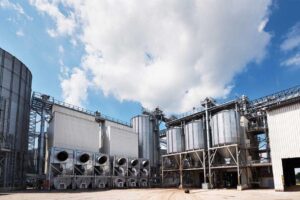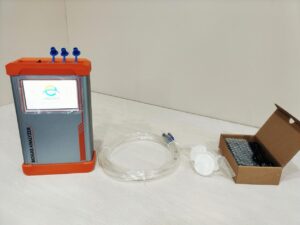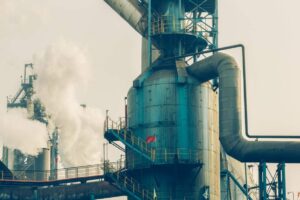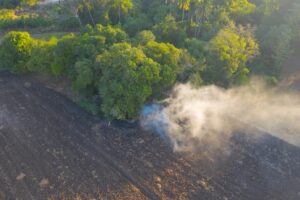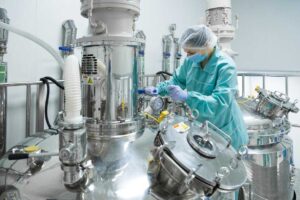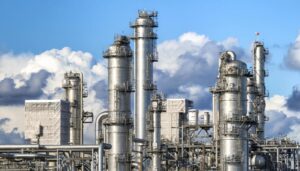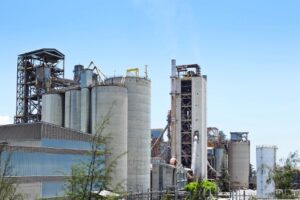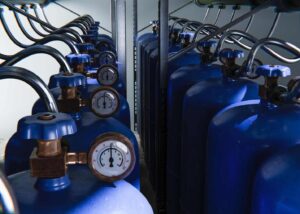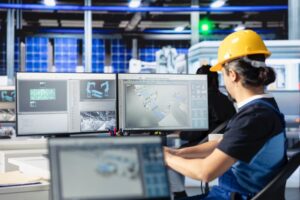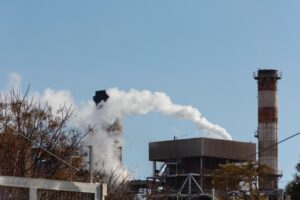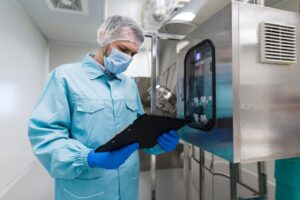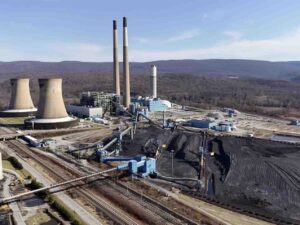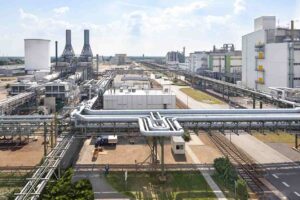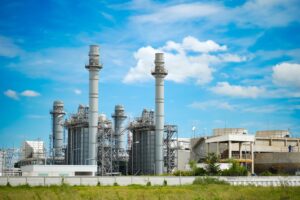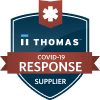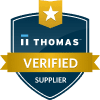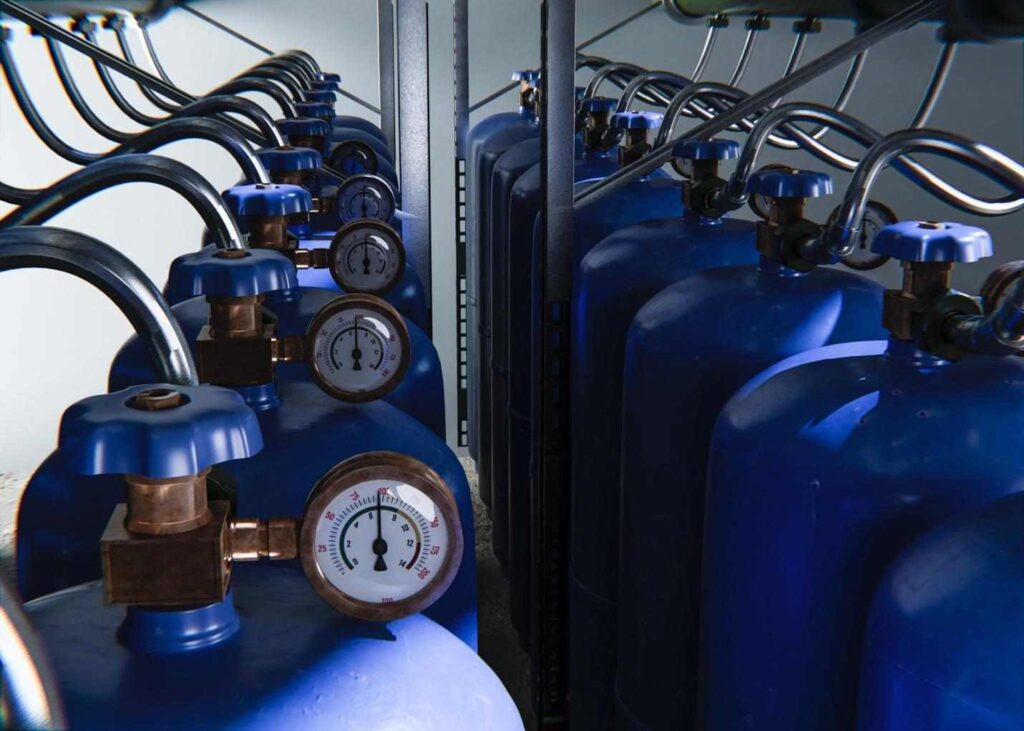
In industrial operations, calibration gas standards form the backbone of accurate measurement, regulatory compliance and process control. Whether for metrology labs or on-site production lines, these reference gases ensure that sensors, analyzers and instruments deliver trusted results. Without them, plant engineers face drift, uncertainty and potential non-compliance — a real cost in both safety and efficiency.
The purpose of this article is to explore how and why a TDLAS gas analyzer elevates calibration-gas standards in industrial contexts. We’ll dig into the foundations, then show real-world practice, finally addressing strategic insight and deeper reflections. My aim: deliver not just information, but thought-provoking insight so you walk away with a clear sense of why measurement integrity matters, and how TDLAS technology can support it in modern calibration gas workflows.
Why Should You Use TDLAS Gas Analyzers to Elevate Calibration Gas Standards?

A. What Are Calibration Gases and Why They Matter
Calibration gases are well-defined mixtures used as references to calibrate analytical instruments and gas detectors. They must be traceable to national or international standards.
In industry, these standard gases support:
- verifying instrument accuracy.
- maintaining process control.
- fulfilling regulatory compliance.
Yet real-world use faces hurdles. For example: cross-interferences from other gas components, drift of instrument response over time, heavy maintenance burdens, and the complexity of maintaining a reliable traceability chain. These challenges underscore why calibration gas management must go beyond mere routine.
B. What Is a TDLAS Gas Analyzer?
A TDLAS (Tunable Diode Laser Absorption Spectroscopy) gas analyzer employs a narrow-linewidth laser tuned to a specific absorption line of a target gas. The gas absorbs part of the light and the reduction in intensity gives the concentration.
Its key strengths include:
- ultra-high sensitivity (down to ppb/ppm levels)
- extremely fast response and real-time monitoring capability
- strong selectivity (low interference from other gases) and often minimal maintenance due to fewer moving parts.
In industrial settings, you’ll find TDLAS gas analyzers in process streams, emissions monitoring, and quality-control applications where traditional methods struggle. For example, measuring trace moisture in natural gas pipelines.
C. Why Combining Calibration Gas Standards with a TDLAS Gas Analyzer Makes Sense
Calibration gas supplies the reference standard; a TDLAS analyzer supplies the measurement precision. When you pair them, you elevate the credibility of your measurement chain.
More specifically:
- A TDLAS gas analyzer can verify the true composition of a calibration gas mixture, spotting deviations before those gases are used in calibration.
- It supports maintaining standardization by continuously monitoring the calibration gas stream or verifying bottled mixtures.
- From a business perspective, the drivers are clear: better regulatory certainty, stronger measurement integrity, fewer interruptions or re-calibrations, and reduced downtime. In other words: improved operational reliability and lower risk of measurement-based non-compliance.
By integrating a TDLAS analyzer into your calibration-gas workflow, you’re creating a tighter control loop: standard gas → measurement validation → process assurance. That loop strongly supports plant engineers and technical teams aiming for high-confidence results.
What Fundamental Role Do TDLAS Gas Analyzers Play in Calibration Gas Standardization?
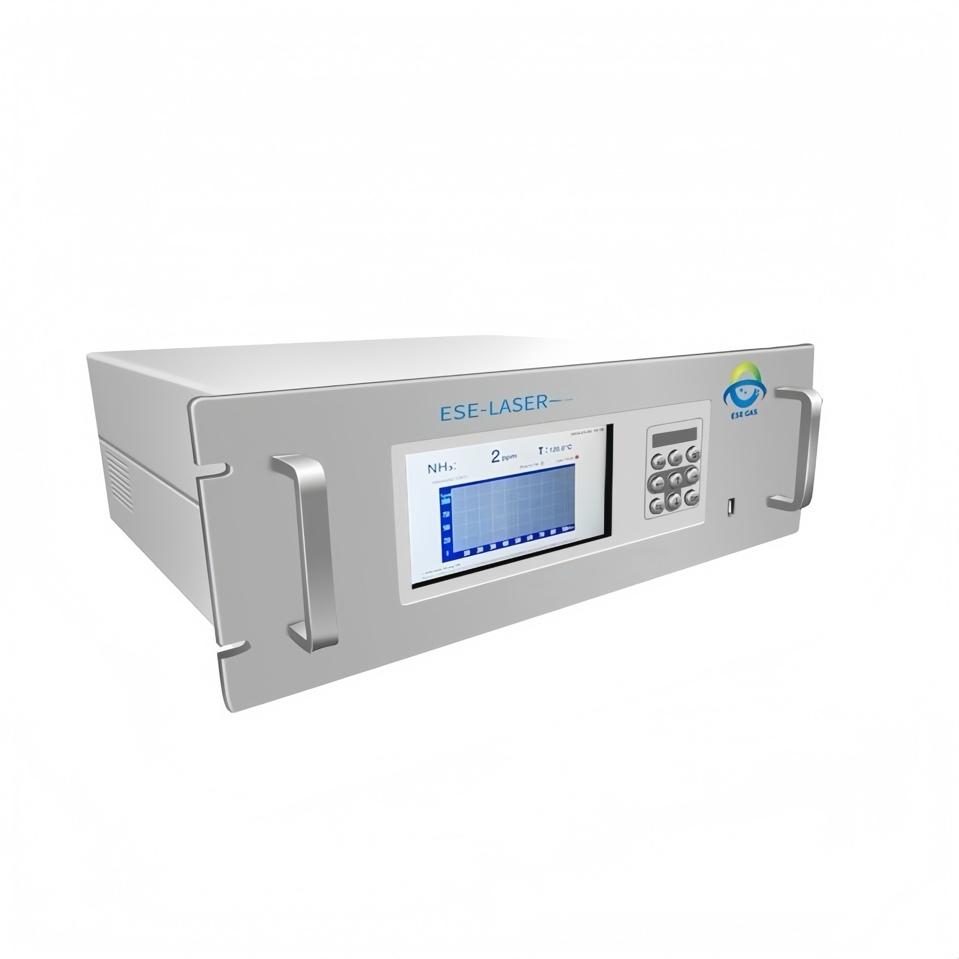
(ESE-LASER-100 TDLAS Gas Analyzer)
To illustrate concretely, let’s refer to the instrument ESEGAS ESE-LASER-100 (a TDLAS gas analyzer configured for HCl, HF and NH₃) and explore four practical benefits.
A. Enhanced Accuracy and Selectivity
First, the TDLAS gas analyzers target very specific absorption lines for gases like HCl, HF or NH₃. Thanks to this selective tuning, it avoids many of the cross-interferences that plague older techniques such as NDIR or electrochemical sensors. For example: in a trace mixture at ppm or even ppb level, traditional sensors might show drift due to background gases, but the ESE-LASER-100P still resolves HCl with a resolution of 0.1 mg/m³ and response time under 15 s.
Moreover, in calibration gas workflows this means you can trust the standard’s concentration more confidently and reduce measurement uncertainty. Instead of simply relying on the certificate of bottle gas, you are verifying with high-fidelity instrumentation. That extra confidence translates into fewer retests and stronger analytical credibility in the plant setting.
B. Improved Reliability and Stability Over Time
Second, because TDLAS methods (as embodied in the ESE-LASER series) use fewer moving parts, fewer consumables and non-contact optical measurement, the frequency of recalibration or adjustment declines. According to manufacturer specs, drift sits at ≤2%FS, and the system handles sample gas temperatures to 600 °C.
In a calibration gas laboratory or standard-gas production environment this reliability means less maintenance, fewer interruptions and better uptime. For a plant engineer that means calibration checks don’t become bottlenecks, instrument availability stays high, and the turnaround for verifying calibration gases shortens. In turn, this elevates the standard of measurement practice across the facility.
C. Real-time Monitoring and Dynamic Adaptation
Third, whereas many calibration gas routines are periodic or batch-based, the TDLAS analyzer enables near-real-time monitoring of gas composition or purity. The ESE-LASER-100 line supports continuous monitoring of the calibration gas stream (or bottle purge gas) and can alert to contamination or drift early on.
Within an industrial plant, this means you can embed the standard gas verification into your process control loop: the calibration gas feed is monitored continuously, issues detected proactively, and corrective actions triggered before downstream measurement is compromised. The operational benefit? Fewer surprises, better decision-making data, and a shift from reactive to proactive quality assurance.
D. Traceability, Documentation and Compliance
Finally, calibration gas standards often must link to national and international traceability chains. Here the TDLAS analyzer adds real value: it logs detailed measurement records, stores diagnostics, supports audit trails and validates the composition of the gas standard as part of the chain of custody. The ESE-LASER-100 system uses digital interfaces (e.g., USB, RS232) and stores data which helps to meet compliance demands.
For plant engineers and technical leads, this translates into less manual paperwork, stronger data integrity and better defense in audits or regulatory reviews. It elevates your calibration-gas standard from a periodic check to a documented, live-monitored assurance system.
What Strategic Considerations Should TDLAS Gas Analyzers Bring to Calibration Gas Standards?
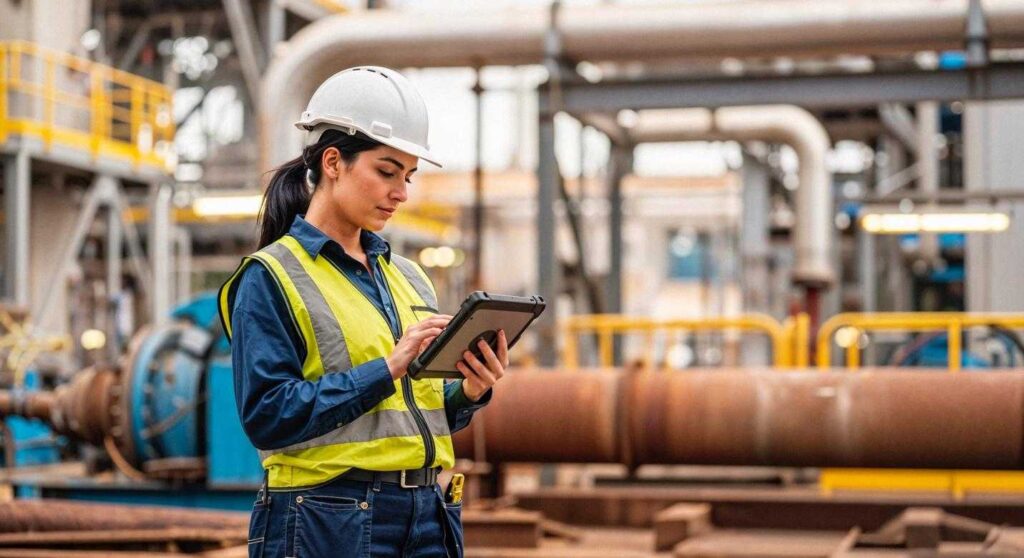
When you embed a TDLAS gas analyzer into your calibration gas production or verification loop, you shift from periodic checks to continuous intelligence. For example, plant engineers might install the analyzer on the calibration-gas feed line, upstream of the instrument under calibration. In doing so, you must address several design points:
- Sample conditioning: filter particulates, regulate pressure and temperature, remove moisture.
- Optical path length & laser wavelength: longer path improves sensitivity; wavelength choice defines specificity.
- Maintenance strategy: plan preventive routines for optics, purge lines, validate zero/gas span.
By combining calibration-gas supply, high-precision TDLAS measurement and a quality-assurance workflow, you create a tightly controlled loop. This loop strengthens measurement integrity, supports traceability and boosts confidence among plant engineers and technical teams.
B. Balancing Cost vs Value in Industrial Applications
Investing in a TDLAS gas analyzer requires a clear business case. Up-front costs may be higher than legacy methods, but the value emerges through:
- Reduced downtime: fewer calibration bottle failures or instrument surprises.
- Improved accuracy: lower measurement uncertainty improves process decisions.
- Compliance risk reduction: better data helps avoid cost of non-conformance.
As hidden value streams, consider fewer re-calibrations of instruments, less metering uncertainty, and improved throughput of calibration checks. In other words: you’re not only buying an analyzer, but you’re also buying measurement integrity and operational confidence. For plant engineers, framing the ROI in terms of risk mitigation and uptime improvement often resonates more than pure cost-saving.
C. Potential Pitfalls and How to Mitigate Them
Despite all the benefits, deploying a TDLAS analyzer within a calibration-gas standard framework isn’t without challenges. Key pitfalls include:
- Technical limitations: extreme gas concentrations or very non-ideal matrices (e.g., heavy hydrocarbons or condensation) may degrade optical performance. Solution: careful line-selection and path design.
- Calibration gas standard integrity: the analyzer can only be as good as the reference. If the cylinder leaks, or the mixture drifts, the entire chain weakens. Engineers must ensure traceability, certification and physical integrity of the standard gas.
- Operational risks: over-reliance on automated diagnostics can breed complacency. There must still be periodic human checks and a strong understanding of system behavior.
By acknowledging and managing those risks proactively, you ensure that the TDLAS analyzer truly enhances rather than complicates your calibration-gas standard system.
Conclusion: From Theory to Impact
First, let’s recap how TDLAS gas analyzers elevate calibration gas standards in an industrial setting. It sharpens accuracy and selectivity by tuning to specific absorption lines and reducing cross-interference. It enhances reliability and uptime by lowering maintenance and drift. It enables real-time monitoring and risk detection rather than waiting for the next batch test. And it strengthens traceability, documentation and compliance by generating digital evidence of measurement integrity.
Then, reflect on the evolving role of measurement integrity in modern industrial operations. Today, calibration gas is not just a bottle of reference mixture—it’s part of a trusted data ecosystem. As operations become smarter, data-driven decisions dominate. Thus, investing in technologies like the TDLAS gas analyzer is not simply about a better instrument—it’s about building confidence in every downstream decision from process control to compliance audits. When measurement becomes trustworthy, you gain more than numbers—you gain certainty, responsiveness, and resilience.
Finally, if you’re a plant engineer or technical decision-maker charged with calibration gas strategy, now is the time to evaluate how a TDLAS gas analyzer can be integrated into your workflow. Start with a gap assessment of your current standard gas verification methods, then engage your instrumentation team and vendor partners to assess a pilot deployment. The impact? Stronger data, less risk, and a more robust foundation for your operations. Contact with us for a tailored solution!
FAQs:
Q1: What is a TDLAS gas analyzer and how does it work in calibration-gas applications?
A1: A TDLAS gas analyzer (tunable diode laser absorption spectroscopy) uses a narrow-linewidth laser tuned to an absorption line of a target gas. As the laser passes through the gas sample, molecules absorb specific light wavelengths, and the system uses that absorption to calculate concentration. In calibration-gas workflows this technology allows users to verify gas mixtures (e.g., HCl, NH₃) with much greater selectivity and sensitivity than older methods.
Q2: Why does a TDLAS gas analyzer matter for calibration gas standards in industrial settings?
A2: In industrial operations, calibration gases must provide reliable references for instrument accuracy, process control and regulatory compliance. A TDLAS gas analyzer matters because it:
- Provides high-accuracy measurement at ppm/ppb levels.
- Reduces cross-interference from other gases, thanks to laser selectivity.
- Enables strong monitoring of standard-gas streams and verification of mixture integrity — thereby elevating the standard-gas regime from static to dynamic.
Q3: How does a TDLAS gas analyzer improve accuracy and selectivity compared to older gas-analysis methods?
A3: Unlike many infrared (NDIR) or electrochemical sensors, a TDLAS gas analyzer can tune to very specific absorption lines, which reduces interference from background gases. This means in calibration-gas applications you achieve lower measurement uncertainty, more confident concentration verification, and fewer false readings — especially critical for trace gases at ppm or ppb levels.
Q4: What are key integration considerations when embedding a TDLAS gas analyzer into calibration-gas workflows?
A5: Integration requires attention to:
- Sample conditioning (ensuring representative, clean, stable sample gas).
- Optical path design (path length, laser wavelength matching the target gas).
- Maintenance strategy (filtering, purging, diagnosing optical window contamination).
- Workflow alignment so the calibration gas supply, TDLAS measurement, and QA processes form a coherent chain. These steps help plant engineers embed the analyzer effectively rather than as a stand-alone add-on.
Q5: What trade-offs should be evaluated when assessing a TDLAS gas analyzer for calibration-gas use?
A6: While the up-front investment for a TDLAS gas analyzer may exceed older methods, the value comes via:
- Lower downtime and fewer interruptions.
- Improved accuracy and reduced measurement uncertainty.
- Enhanced compliance and reduced risk of non-conformance.
Hidden value streams include fewer re-calibrations, better throughput of calibration checks and stronger data integrity. These factors should inform your ROI assessment.
Q6: What limitations or pitfalls should users watch for with a TDLAS gas analyzer in a calibration-gas context?
A7: Some limitations include:
- Very high concentrations or complex gas matrices may challenge optical path or laser line selection.
- Calibration-gas standard integrity still matters — if the reference mixture drifts or leaks, no analyzer can fully compensate.
- Operational risks such as complacency in maintenance, misinterpreting diagnostics, or neglecting sample-conditioning requirements.
Mitigation requires strong workflow design and disciplined QA culture.
Q7: How does using a TDLAS gas analyzer support traceability and compliance in calibration-gas standards?
A8: Calibration gases must be traceable to national/international standards (e.g., NIST) to ensure the measurement chain’s integrity. A TDLAS gas analyzer contributes by:
- Generating digital records of measurement, diagnostics and performance.
- Validating calibration-gas composition in real time or near real time.
- Providing audit-ready data that supports regulatory and quality-assurance demands. These features bolster measurement integrity and compliance posture in industrial operations.





